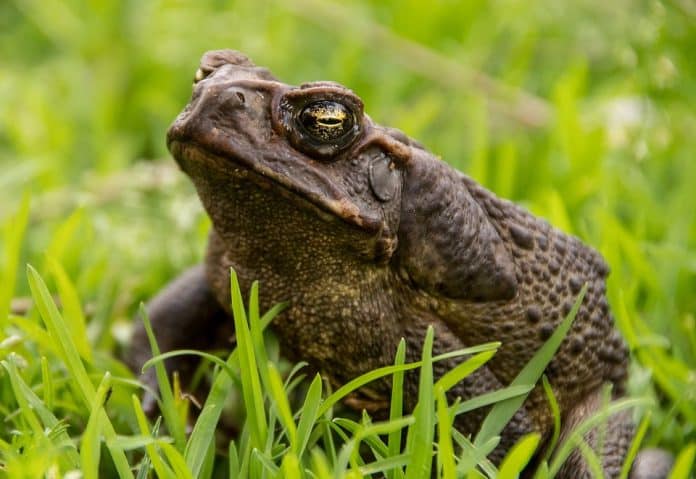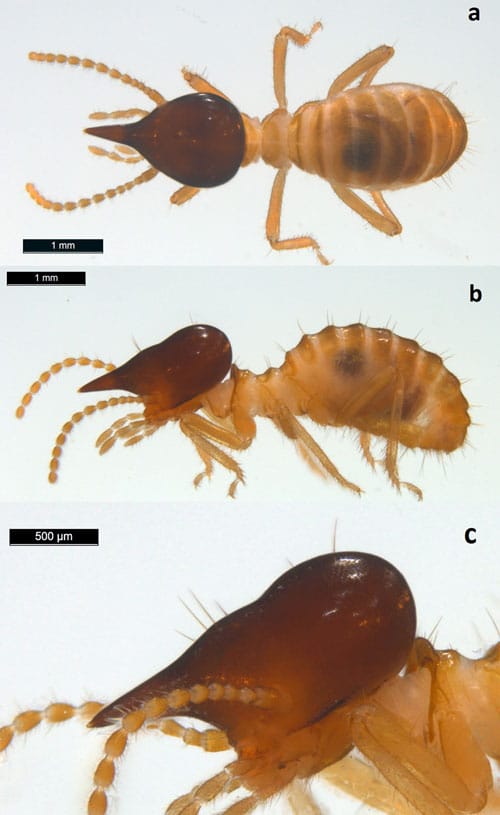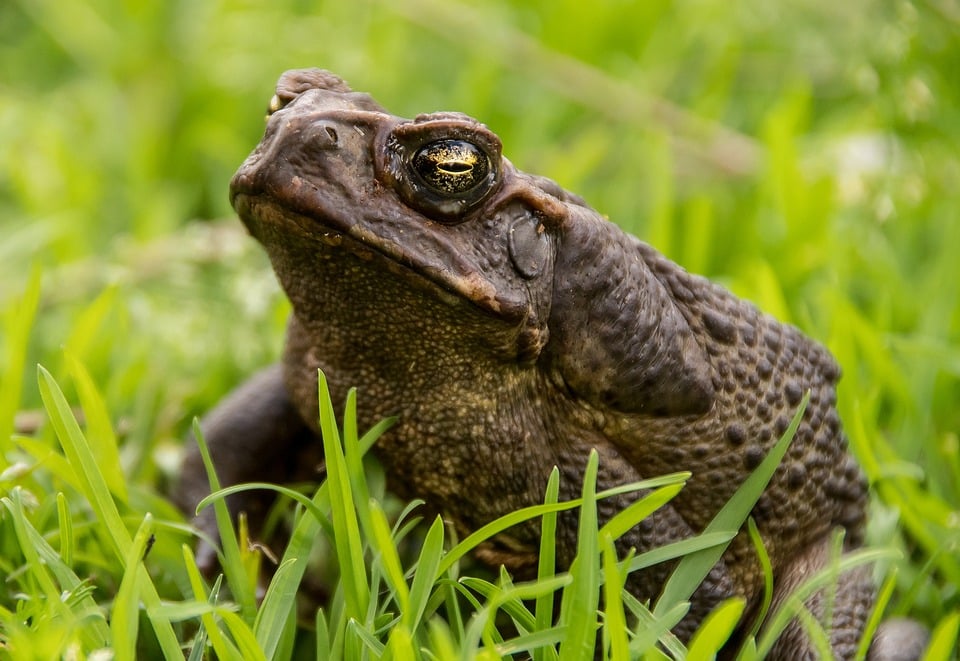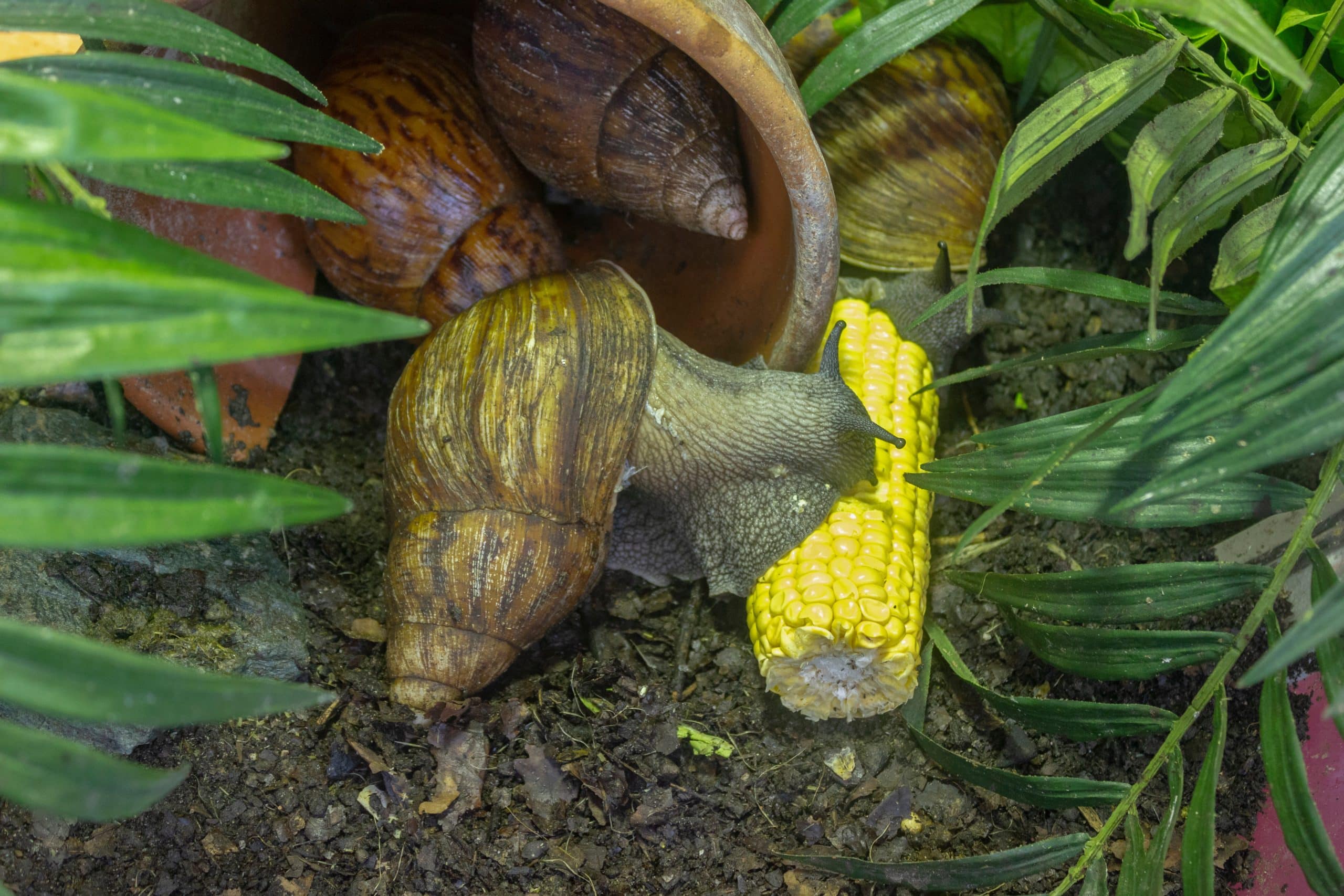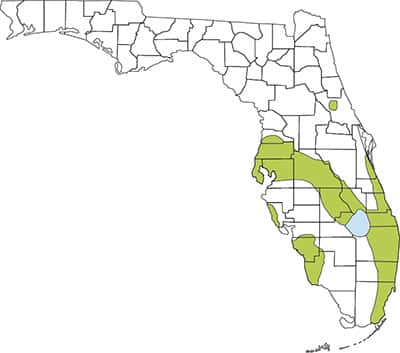Protect your home or business from conehead termites, Giant African Snails, Bufo Toads by learning techniques for identification and control.
Invasive insects and tree and plant diseases cost the U.S. an estimated $40 billion a year in damages, according to the Florida Department of Agriculture and Consumer Services. It’s vital to do what we can to slow their spread and reduce the impact they have on our homes and gardens.
Many of the invasive plant pests and diseases are natural hitchhikers. That’s how they move to new areas with ease as they hide in untreated firewood, attach themselves to outdoor gear and vehicles, or take a ride in the mail. They are also known to arrive in new areas with agricultural materials like soil, seeds, or homegrown fruits and vegetables.
When they arrive in a new environment, these invasive pests have few or no natural predators and, therefore, quickly spread, pushing out our own native species and reducing biological diversity.
Weather can also magnify their growth. Climate change has increased the level of plant pest infestations and disease infection, allowed pests to produce more generations each year, and extended the suitable habitat for plant pests.
To protect our ecosystems and our domestic food supply, it’s important the public is involved in the effort to protect our environment. It can make a huge difference.
The Florida Department of Agriculture and Consumer Services (FDACS) is therefore asking Floridians to be on the lookout for invasive pests, minimize the risk of infestations, and contact the FDACS with any suspected sightings.
Three particular invasive species to be on the lookout for are the Conehead Termite (Nasutitermes corniger), the Bufo or Cane Toad, and the Giant African Snail.
Conehead Termites
Conehead termites will eat almost anything that contains cellulose. It commonly infests and consumes trees, shrubs, roots, structural lumber, furniture, fence posts and rails, and paper products. They’re easy to identify. They have a large, bloated head that resembles a helmet. Ranging in size from 3 to 4 mm, conehead soldiers are cream in color on the body, while the head appears dark brown or black. Additionally, the insect possesses a long, tubular snout that discharges a glue-like material to irritate and entangle predators. These pests can project that defensive material up to 25 mm away.
These pests likely arrived in Florida from an infested ship, cabin cruiser, yacht, or pleasure boat and are considered an aggressive structural pest, known to eat dead portions of live trees, including fruit trees. Its high reproductive output and the ability for fragmentation of colonies may affect treatment. Infestations can easily be detected in occupied structures and can be treated if the species is correctly identified and all the nests are located. Following treatment, periodic resurveys are needed as young colonies can remain hidden inside wood for several years.
Conehead species construct parts of their nests aboveground, potentially making detection somewhat easier. If you spot any mound-like structures or mud tubes along the trunks of trees in the yard, it’s a pretty good indication that an infestation is present. Residents of infested areas may also notice the oddly shaped soldiers themselves, as conehead termites forage aboveground.
Methods that will help prevent not only conehead termites but other termite species as well:
• Keep shrubs and trees trimmed at least 3-5 feet away from your home
• Not using mulch around the foundation
• Keep firewood, scrap lumber, cardboard, or any other cellulose-based materials as far from your home as possible.
• Ensure that gutters and downspouts direct water well away from the home. The conehead termite is an invasive species that was introduced into Florida in 2001 and is now found in the southern part of the state. The conehead termite is a dry-wood termite species with a native distribution in the Caribbean and Central American tropical countries such as Panama.
• A newly established conehead termite colony remains hidden for several years after the colony begins, but as the colony ages and matures, visible nests are constructed above ground. The above-ground nests may show up in trees, shrubs, or on buildings.
Sightings or infestations may be reported to the Conehead Termite Program, part of the Florida Department of Agriculture and Consumer Services (FDACS) at www.fdacs.gov/Consumer-Resources/Health-and-Safety/Protect-Your-Home-from-Pests/Termites/Conehead-Termite-Program or by going to www.FDACS.gov and searching for “conehead.”
Cane Toad (Bufo)
Any toad you observe in Florida that is larger than 4 inches is NOT native and is almost certainly an invasive Cane Toad. They prey on frogs, lizards, snakes, small rodents, or anything that fits into their large mouths.
It’s a good idea to catch and identify ANY toad you see in your yard to be sure that they aren’t dangerous as their toxin is an irritant to skin and eyes. They are also a real threat to pets — should a pet bite or swallow a Cane Toad, it will become sick and may die. Symptoms of Cane Toad poisoning in pets include excessive drooling and extremely red gums, head-shaking, crying, loss of coordination, and sometimes convulsions.
The University of Florida recommends humanely euthanizing any Cane Toads you find by rubbing or spraying 20% benzocaine toothache gel or sunburn spray (do not use 5% lidocaine) on the toad’s lower belly. In a few minutes, it will become unconscious. Put the frog in a sealed plastic bag in the freezer for 24-48 hours to ensure that it is humanely euthanized before disposal.
Giant African Snail
(Lissachatina fulica)
At nearly 8 inches long and up to 5 inches in diameter, the giant African land snail (GALS) is one of the most destructive snails in the world and devours at least 500 different types of plants. These snails can be devastating to Florida agriculture and natural areas as they cause extensive damage to tropical and subtropical environments. They are a serious health risk to humans because they carry the parasite rat lungworm, known to cause meningitis in humans.
The U.S. Department of Agriculture’s Animal and Plant Health Inspection Service (APHIS) now includes the Giant African Snail on its list of top national pest threats. Florida and Hawaii are already under quarantine, and 14 other states are prime targets for invasions.
On June 23, 2022, the Florida Department of Agriculture and Consumer Services (FDACS) confirmed the detection of GALS in the New Port Richey area of Pasco County. This detection was reported by a Pasco County Master Gardener. Unfortunately, also confirmed was the presence of rat lungworm Angiostrongylus cantonensis in this newly discovered population.
According to the Centers for Disease Control and Prevention, angiostrongyliasis, also known as neural angiostrongyliasis or rat lungworm, is a disease that affects the brain and spinal cord. It is caused by a parasitic nematode (roundworm parasite) called Angiostrongylus cantonensis. Humans can become infected with A. cantonensis if they eat (intentionally or otherwise) a raw or undercooked infected intermediate host, thereby ingesting the parasite. For more information regarding this parasite, visit the CDC.gov website at ww.cdc.gov/parasites/angiostrongylus/index.html
The FDACS’s Division of Plant Industry began to survey the New Port Richey area, enacted a quarantine, and started the treatment process to eradicate this detrimental agricultural pest. More than 50 properties were treated with a metaldehyde-based molluscicide (snail bait).
Readily available and easy-to-use products that attract and kill GALS can be applied to your lawn and gardens — as well as vegetables right up to the day of harvest. Snails eat the bait, then hide and die. Any uneaten bait degrades naturally in the ground.
Be on the lookout for these GALS! If you think you’ve found one, refer to an ID sheet that can be found at www.fdacs.gov/content/download/23825/file/SnailIdentificationsheetDec21.pdf or email a photo for identification to [email protected]. If you must handle these snails, wear gloves and avoid bodily contact, particularly with your eyes, nose, and mouth.
To learn more about invasive pests in your area and how to stop them, visit HungryPests.com

